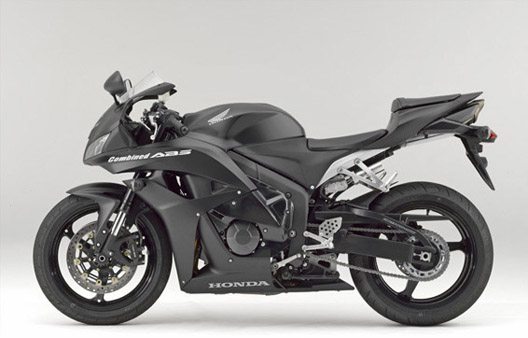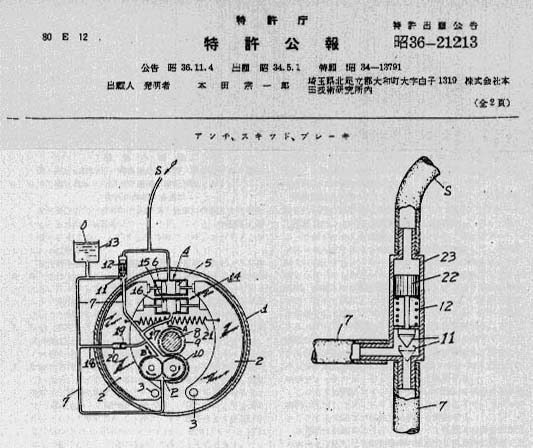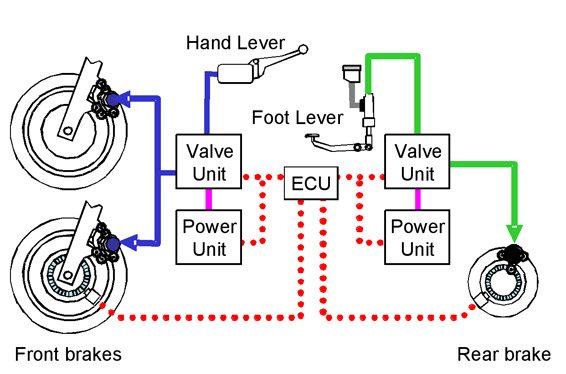Honda Announces World’s First Electronically Controlled
“Combined ABS” for Super Sport Bikes
June 9, 2008 – Honda has announced the world’s first electronically controlled “Combined ABS” for Super Sport motorcycles, aimed at combining ABS and CBS (Combined Brake System, or “linked” brakes) systems into one system that applies the basic advantages of both, while specifically addressing the requirements of a Super Sport context.

In order to achieve this, the particular characteristics of Super Sport bikes, such as short wheelbase, are taken into account. The system also operates without interference to sports riding, and with an emphasis on maintaining full rider control.
About the New Honda Combined ABS System
The system consists of an electronically controlled combined “brake by wire” system with an innovative stroke simulator. Direct motor control ensures precise operation of the ABS. The components are divided into several smaller units so there are more, but smaller units than in previous systems.
The system’s effectiveness is due to four main factors:
- Electronic control of the CBS, allowing more advanced control of brake force. This provides a more sensitive distribution of brake force over both wheels.
- Measurement of rider input force on each lever. The ideal brake force on both wheels is generated accordingly, providing optimum distribution and minimizing vehicle body reaction.
- An “ABS modulator” which ensures late triggering of ABS, and smooth ABS intervention.
- Small size meaning that the system’s components can be well integrated in the motorcycle’s package. Thus mass centralization, a key feature for Super Sport bikes, is supported.
All the basic ABS and CBS functions are provided, including the prevention of wheel lock, improved balance and easy operation. This is achieved without any compromise to stability during ABS operation.
Pitching is minimized so that the bike keeps its normal position. Overall, sport riding performance is uninterrupted – cornering feel remains the same and controllability is enhanced.

At that time, Honda did not manufacture automobiles. The application gives some idea about the thinking behind motorcycle brakes of the period.
From the very beginning, Honda has been actively tackling with the issue of safety. Safety of motorcycles can be largely classified into two stages, active safety and passive safety. The brake in particular can be said to be very important in active safety.
The aim of developing the brake is to secure a high effect with good controllability. It is necessary to achieve the goal to heighten three areas; controllability, convenience and the sense of confidence for the average rider.
With respect to controllability, at first the improvement of conventional brake systems can be cited, which will include the development of a disk brake system for motorcycles for the first time in the world and the development of sintered friction materials.
In regards to convenience, the second area, we have begun the development of a combined brake system (CBS) ahead of others and are now tackling the task of an easier way of distributing braking force between the front and rear wheels. This is related to the improvement of controllability mentioned in the beginning.
As for the enhancement of the sense of confidence, the third, we aimed at preventing wheel lock and came up with the anti-lock brake system (ABS). Furthermore, in docking CBS and ABS, we developed a combined ABS which enhanced the respective effects.
Positioning CBS, ABS and combined ABS as those contributing to the manufacture of motorcycles with the sense of confidence, Honda aims at adopting and expanding them to many more models as an advanced brake system.



